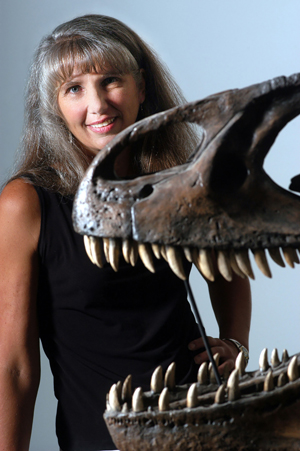Mary Schweitzer
Alumna, professor of biological sciences at North Carolina State University
Mary Schweitzer is a third generation Montanan who had a degree in audiology, taught deaf children, was married and had three children and then decided to attend Montana State University to get an education degree in 1988. Along the way, she became fascinated by paleontology, research and science, which led to her earning her MSU doctorate in biology in 1995. She went on to become a pioneer in many aspects of paleobiology and inspired a generation of female paleobiologists. In 2005, she “discovered blood vessels and structures that looked like whole cells inside [a] T. rex bone.”1 This discovery was then listed three times among the top 15 scientific stories of each of three years. She has been widely published and regularly participates in the scientific community; and many articles have been published about her unique and inspiring rise from humble roots in Helena. She travels the world to present and discuss her science.
Mary Schweitzer is the epitome of a born, bred, smart and hard-working Montana-loving woman.
- Fields, H. (May 2006) “Dinosaur Shocker” Smithsonian Magazine. https://www.smithsonianmag.com/science-nature/dinosaur-shocker-115306469/#7jdFgBrxPbxMzC5u.99 Accessed on 20 July 2018.

